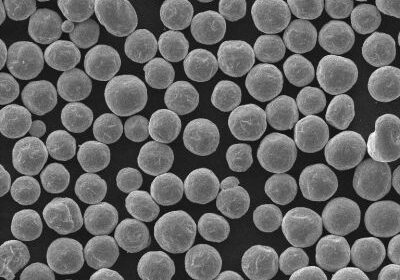Growing Demand for Materials Across the Globe is Expected to Boost the Demand for Hydrodesulfurization Catalysts Market During the Forecast Period 2028 :
Market Synopsis
According to Research Report on the Global Hydrodesulfurization Catalysts Market, the global hydrodesulfurization (HDS) catalysts market is projected to reach a market value of over USD 3.72 billion by the end of 2028 at a CAGR of over 4 % during the forecast period.
Hydrodesulfurization is a catalytic hydrotreating process for sulfur removal from fuel oils and naphtha. The refinery feedstock and natural gas contain a wide range of organic sulfur compounds, including thiols, thiophenes, and organic sulfides and disulfides. In catalytic hydrodesulfurization, the feedstock is de-aerated and mixed with hydrogen, preheated in a fired heater, and then charged under pressure through a fixed-bed catalytic reactor.The standard catalyst for hydrogenation of Organic Sulphur compounds in Hydrocarbon feedstock is Cobalt-Molybdenum and Nickel-Molybdenum supported on Alumina base.The sulfur and nitrogen compounds that exist in the feedstock are converted into H2S and NH3 in the reactor. After cooling down, the reaction products leave the reactor and enter a liquid/gas separator. The hydrogen-rich gas obtained from the high-pressure separation is recycled to combine with the feedstock, and the low-pressure gas stream rich in H2S is sent to a gas treating unit where H2S is removed.
The purpose of removing the sulfur from these fuel oils and natural gas is to reduce the sulfur dioxide emissions resulting from several combustions. Another key reason for removing sulfur from the naphtha streams within a petroleum refinery is that, even in very low concentrations, sulfur poisons the noble metal catalysts (platinum and rhenium) in the catalytic reforming units that are then used to upgrade the octane rating of the naphtha streams. Damage to these precious metal catalysts can severely impact the process and lead to high costs.Moreover, with the increasing regulations on emissions from fuel combustion, the demand for hydrodesulfurization catalysts is likely to increase at a steady pace during the forecast period.
SEGMENTATION
By Application
- Diesel–Diesel is one of the prominent fuels used in several industrial and commercial applications, including transportation and industrial operation. The combustion efficiency of diesel engines is 25%−40% higher than that of similar gasoline engines. However, the combustion of impurities in diesel generates several toxic emissions and particulates such as NOx, SOx, inhalable particulates, and other substances harmful to human health, livelihood and the environment.More and more countries have increasingly begun to gradually restrict their diesel standards to ultralow sulfur or even sulfur-free levels because of this. With the rise of diesel standards in various countries, refineries need to shift their focus on producing ultralow sulfur diesel (ULSD) to meet the market’s increasing demand for clean diesel. The increasingly strict diesel standards in most countries globally drive the demand for deep processing of diesel oil to ultralow sulfur. Therefore, an efficient catalytic hydrodesulfurization technology is the requirement of the time for the commercial production of sulfur-less automobile fuels. The HDS technology has the advantages of a high desulfurization rate, long catalyst lifetime, and strong catalyst adaptability to the feed; hence, the demand will likely increase soon.
- Naphtha: High-octane gasoline production by catalytic naphtha reforming is a major process in the petroleum industry. However, naphtha contains several sulfur components, which, if involved in the reforming process, cancause pollutions and catalyst poisoning.Sulfur and sulfur-containing compounds such as hydrogen sulfide (H2S), mercaptans, organic sulfides, and disulfides are present in crude oil. The presence of sulfur in naphtha invariably has a negative and immediate effect on the performance of catalysts used in the reforming process. To prevent the release of toxic gases in the atmosphere and avoid the consequent reforming catalyst poisoning, the HDS processes are used to convert sulfur compound to H2S (hydrogen sulfide), which is removed by washing and hydrocarbons. Bifunctional metal/acid catalysts are applied in the hydrodesulfurization process to minimize sulfur compounds.
- Natural Gas: The condensates of natural gases are made of various hydrocarbon components and contaminants such as mercaptans (thiols), hydrogen sulfide, and others. Hence, the condensates of natural gases can be considered as a fuel resource.
- Others– The others segment includes jet fuel, marine fuel, etc.
KEY PLAYERS
Some of the key players operating in the global hydrodesulfurization catalysts market are Axens (US), Albemarle Corporation (US), Johnson Matthey (UK), Royal Dutch Shell PLC (Netherlands), China Petroleum & Chemical Corporation (China), Clariant AG (Switzerland), HaldorTopsoe (Denmark), Honeywell International Inc (US), Chiyoda Corporation (Japan), Dorf Ketal Chemicals (US), UNICAT Catalyst Technologies, LLC (US), and JGC Catalysts and Chemicals Ltd (Japan).
By Region
-
- North America:North America accounted for over 30% of the global revenue in 2020. The regional market is further categorized into the USA and Canada.
-
- Europe:Western European countries, including Germany, France, and Spain, are the major contributors to the regional market growth.
-
- Asia-Pacific:Asia-Pacific is the fastest-growing regional market for hydrodesulfurization catalysts, with China being the leading country-level market. India is all set to be the fastest-growing country-level market region.
-
- Latin America: An increasing demand for the application of low sulfur and cleaner fuels is fueling the growth of this market.
-
- Middle East & Africa:The countries such as UAE, Kuwait, Saudi Arabia are some of the large exporters of crude oil with low-sulfur concentration globally, driving the growth of the hydrodesulfurization catalysts market in this region.

